I’ve always been a big proponent of exposing my kids to adventure activities as early as possible. I think it builds confidence and teaches them important life skills like resilience, problem solving, creative thinking and communication.
In my experience, when children are really little, adventures can be as simple as navigating man-made lily pads across a pond at a local zoo, or learning to swim in a hotel pool. But what about more specific adventure activities that you can enjoy as a family?
In this post, I’m going to give you a rundown of the type of pursuits you can enjoy with your kids when traveling near or far. The best thing about the following list is that most of these adventures can be done during a pandemic.
Adventure Activities in Water
There are so many water-based adventure activities available to families. Some require the ability to swim, others don’t. That said, the one thing that you should always have on your child is a well-fitted life vest.
Kayaking (Age 8+)
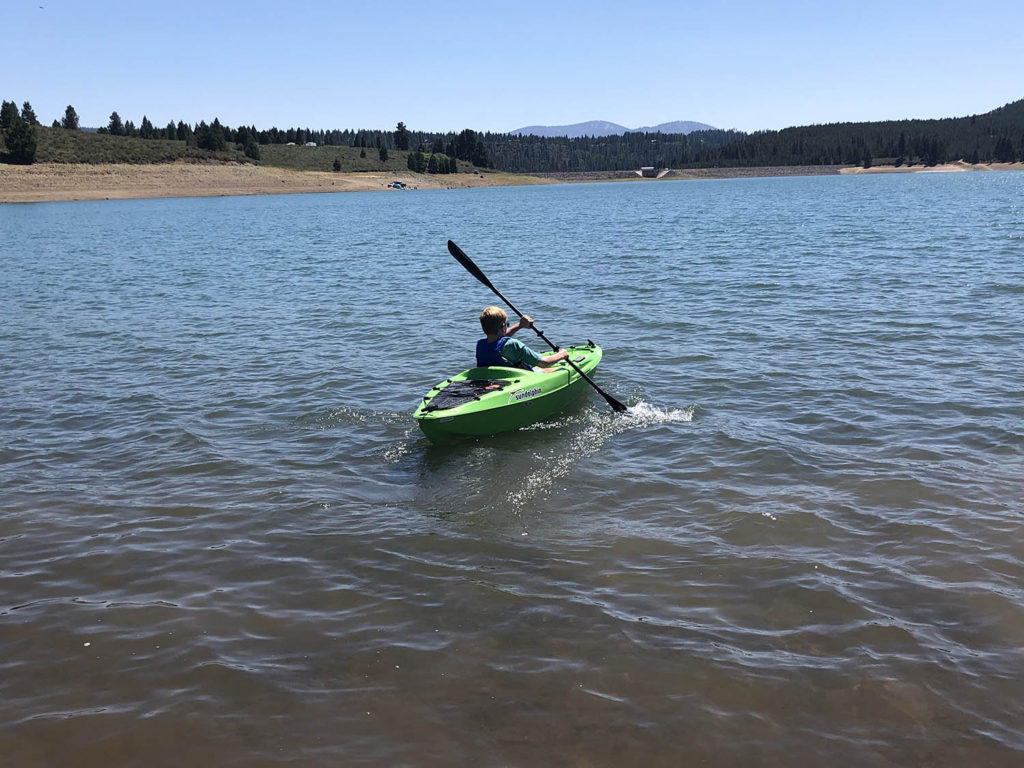
My eldest son was two when we first took him canoeing as part of a family camping trip to the Sierras. Obviously, he was not big enough to handle a paddle, and was merely a passenger. However, it was an experience that appeared to delight him. By the time he turned eight, we had our own kayak for him to use.
Pint Sized Tip: Kayaking on lakes is very different to kayaking on rivers, where there is a moving current. Make sure you start on lakes, and teach your child the basics of how to paddle and steer while you are in shallow water. And, if you are using a recreational kayak, versus a sit-on-top kayak, make sure your child knows how to push themselves out of it when there is a skirt on the cockpit and they are upside down.
Paddle Boarding (Age 7+)
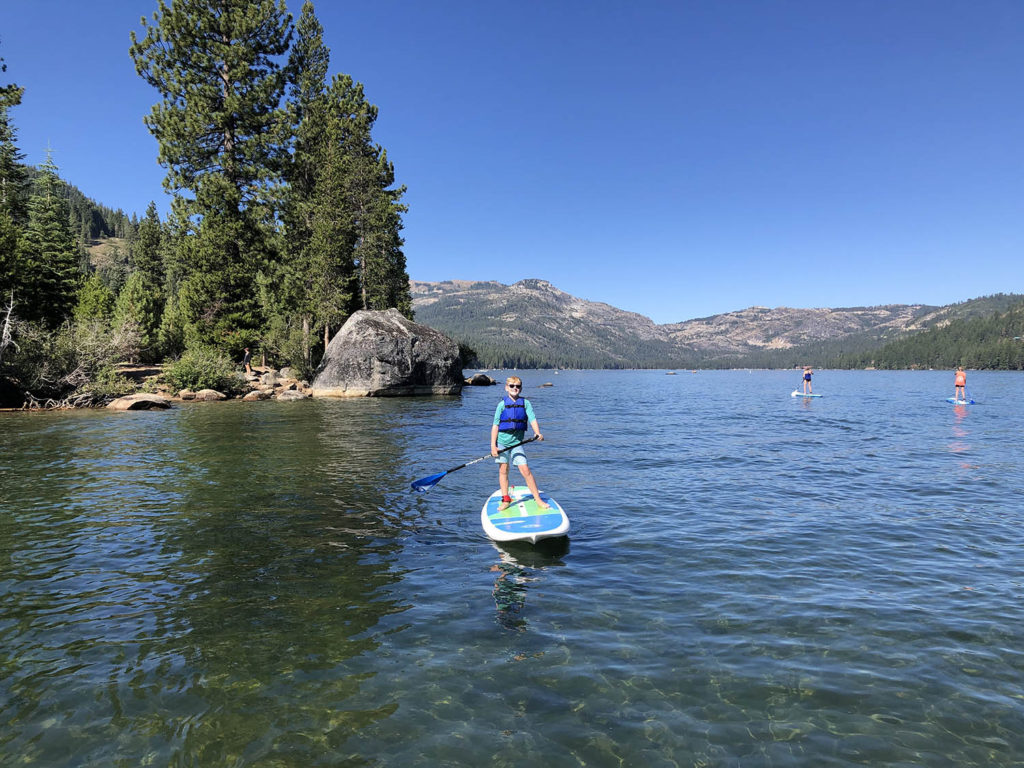
If your child can swim, and has good balance, it is possible to have them paddle boarding on their own board by age 8. That was certainly the case for my kids. However, some rental outfits will let children start as young as five, so long as they are accompanied by an adult. If you consider that a little too young, have your child ride, seated, on the front of your own board. I found being a passenger really helped my kids get a sense of balance before they tried it on their own.
Pint Sized Tip: For younger children, have your child learn to paddle board sitting on their knees first, as the board will be more stable. Over time, you can have them lift up from their knees and then work their way toward standing. Also teach them foot placement. Ideally their feet should be hip width apart on either side of the handhold in the middle of the board.
Waterskiing (Age 5+)
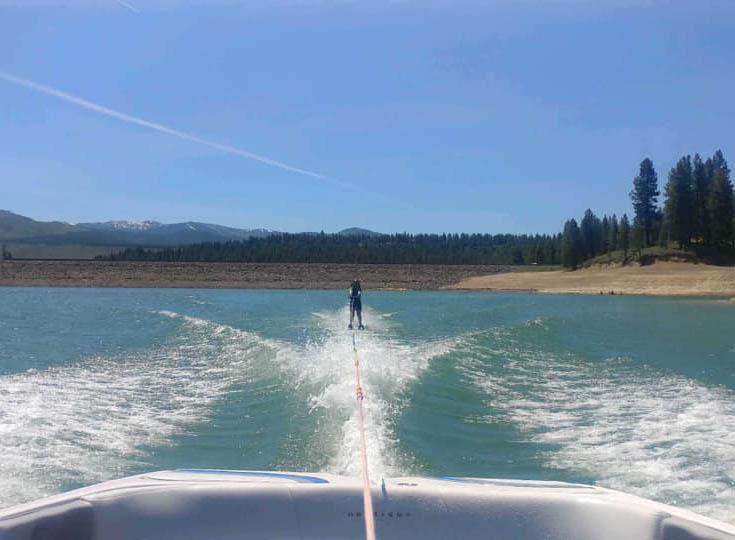
Waterskiing is one of those adventure activities that requires both upper body and lower body strength. Yet I’ve read that it is possible for children as young as 3 or 4 to waterski. I waited until my son was nine. The general technique for getting up is to start with legs together in deep water, and with your ski tips out of the water. You then let the boat pull you up, keeping your arms straight and your legs in a crouched position, with knees in to chest. Only once you are up, do you straighten your legs.
Pint Sized Tip: Unless you already know how to waterski, it may be worthwhile investing in a lesson for your child. A professional instructor will not only teach them the right technique but will also get them mentally ready to be towed behind a boat.
Whitewater Rafting (Age 6+)
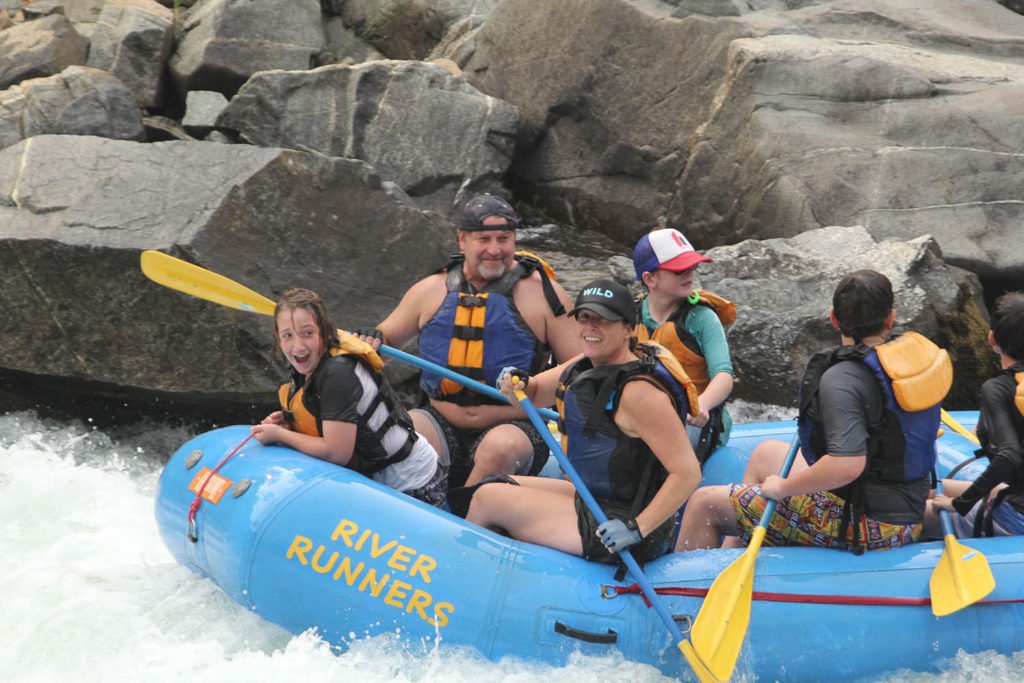
In California, whitewater rafting outfits typically require children to be over the age of six for class III rivers, and over the age of 12 for class IV rivers. This makes sense to me. Aside from needing the strength to help navigate the rapids, whitewater rafting can be very intimidating for kids. It can also be nerve-racking for adults. My own turn on the Zambezi River in Zambia (a class V) was straight-up adrenaline pumping scary.
I personally waited until my youngest had just turned 10 before I took my boys river rafting on the South Fork of the American River, and I’m glad that I did. Instead of being terrified, they were ecstatic. More importantly, they both fully embraced the experience and actively participated in getting through the rapids. There were also no issues when my little one fell out of the boat.
Pint Sized Tip: While any reputable rafting company will go over water safety in advance of getting into the raft, I always remind my children what to do should they find themselves unexpectedly out of the boat. For instance, they know to point their feet (not their head) down river, and they know how to angle themselves toward shore.
Aqua Park (Age 7+)
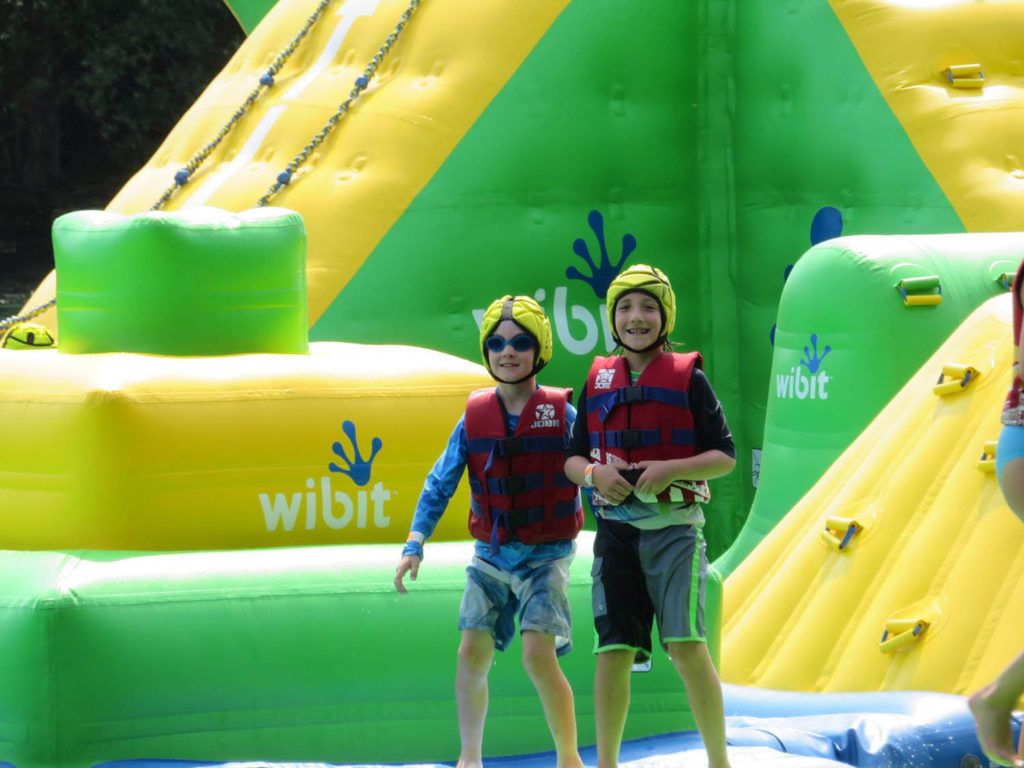
Aqua parks have become all the rage in the last few years. Not to be confused with a traditional waterpark, aqua parks are essentially a floating obstacle course. The first time my boys experienced one, it was in Slough, England. My youngest was just tall enought to meet the height requirement to go it alone. Knowing that my kids were well protected with a life vest and helmet, I let them loose. They were 7 and 10 at the time. A year later, we held a birthday party at a California aqua park called Wake Island, and my husband and I joined in on the fun. What’s unique about aqua park adventure activities is that it requires problem solving as well as balance and a modicum of athleticism.
Surfing (Age 5+)
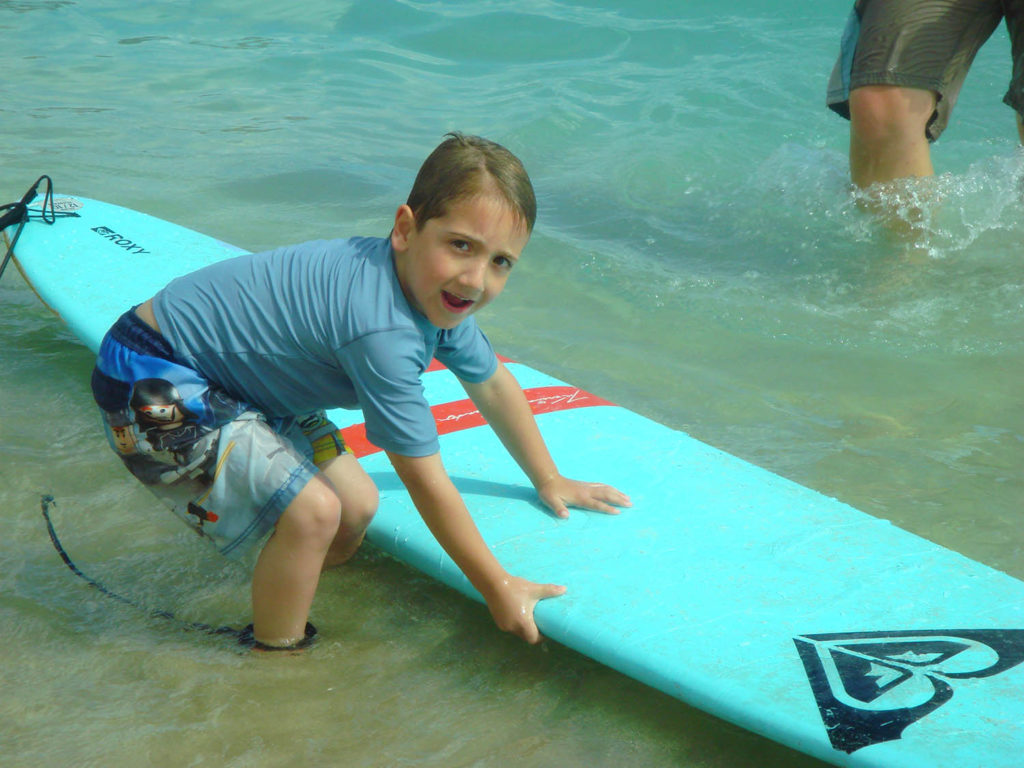
Unfortunately, my kids didn’t get the opportunity to surf until they were seven years old. However, they have been body surfing and boogie boarding ever since they were little. Based on everything I’ve read, most experts believe that children can start surfing as young as five if they are confident in the water. Just make sure you are always close by, pick small waves, and give their board a gentle push when needed. (Paddling is the hardest part to catching smaller waves).
Pint Sized Tip: Be mindful of the size of waves. Don’t pick anything bigger than 1-2 feet when your child is starting out. Also be mindful of currents before getting your child out into the water. And have them practice on land in advance so that they know how to pop up and get the right stance on their board.
Scuba Diving (Age 10+)
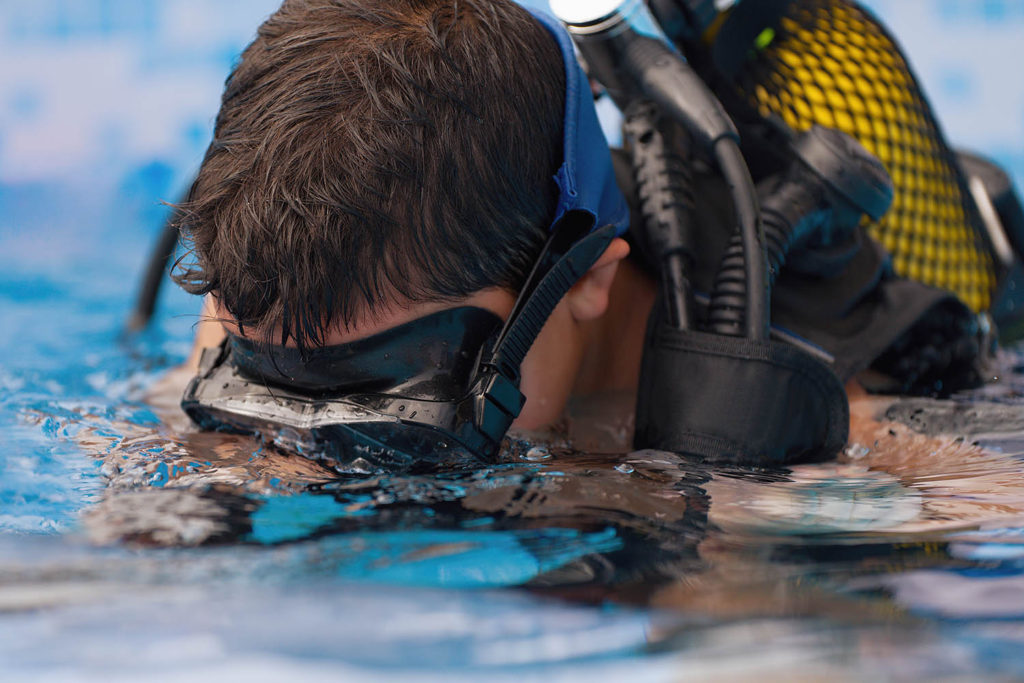
Teaching my kids how to scuba dive is on my-to do list. This is because I had such a great experience learning to dive in Australia when I was a teenager. However, I have been holding off until both my boys can get their PADI Junior Open Water Diver certification. Unfortunately this is only available to children over the age of 10. And, to get a PADI Diver certificate, like I did, you have to be over the age of 15.
Pint Sized Tip: If your child isn’t old enough to get PADI-certified, you can still teach them a few basics . For instance, they can snorkel. This will help them get used to wearing a mask and breathing underwater. The same goes for wearing flippers.
Adventure Activities on Land
The great outdoors is where my family is the happiest and, over the years, we’ve enjoyed many land-based adventure activities, including ones not mentioned here – like archery and cave excursions. However, what follows are some of our favorites.
Rock climbing (Age 5+)
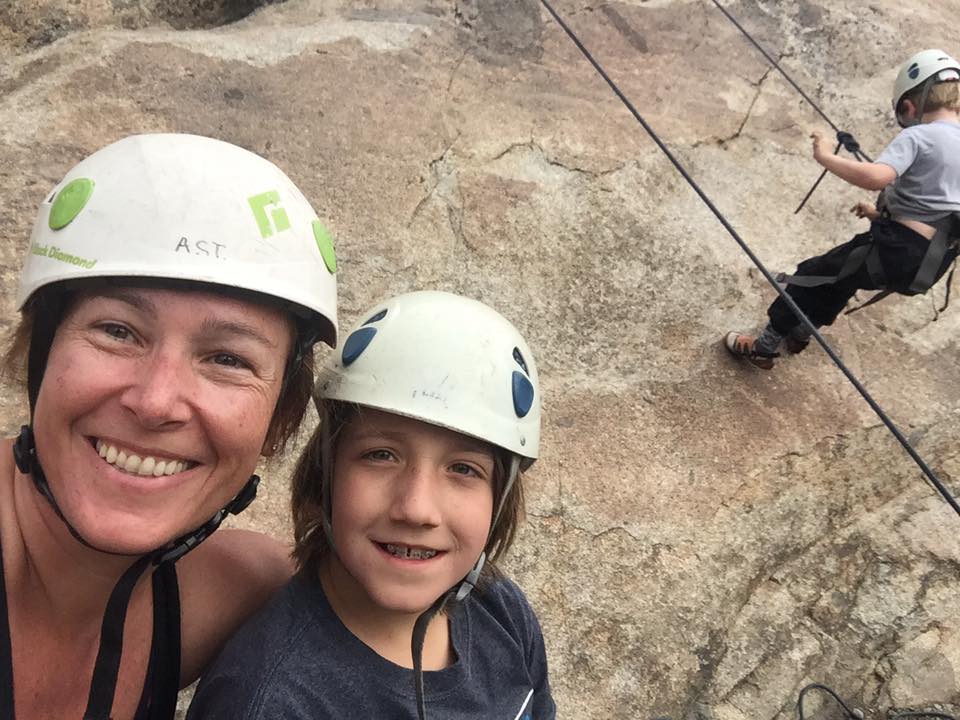
The great thing about rock climbing is that you can start really early, thanks to all the indoor climbing walls that you can find around the country. I think my youngest was about four when he climbed his first wall in a harness at a local trampoline center. He blew me away, as I wasn’t expecting his little legs to get all the way up to the top.
Since those days we’ve moved on to the real thing; something that we started when my youngest was six. However, we always go with professional climbing companies, like Alpine Skills International, because my husband and I aren’t comfortable going solo.
Via Ferrata (Age 10+)
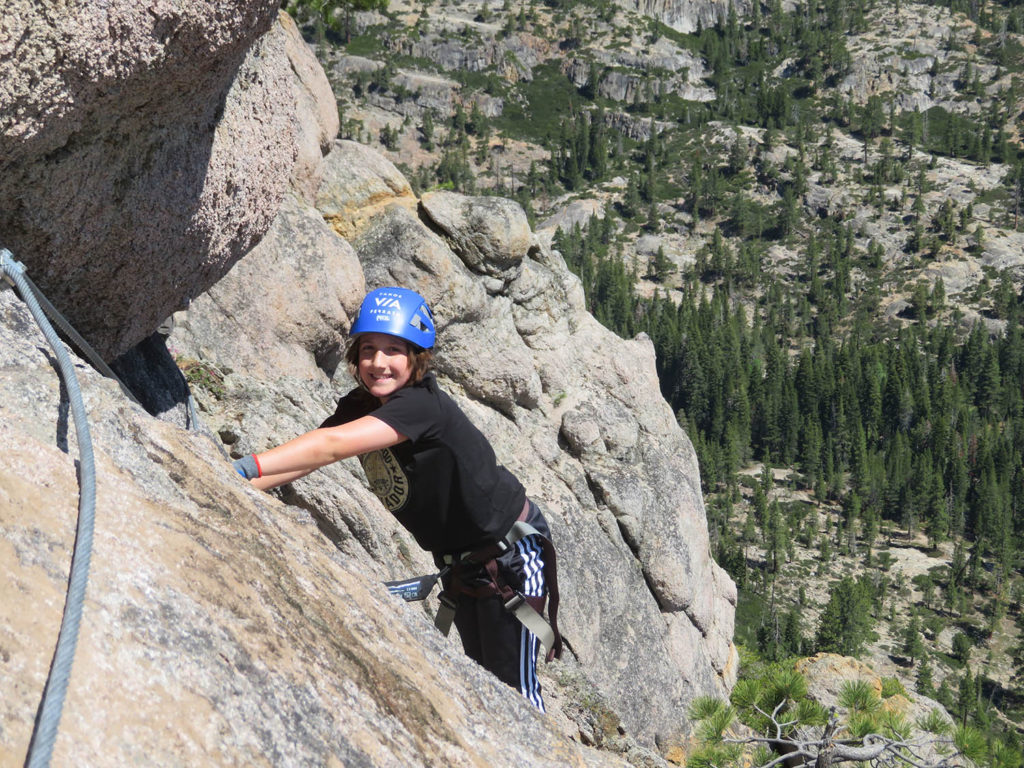
A via ferrata is a protected climbing route that is found in the Alps, as well as other locations. It involves clipping a carabiner onto a metal cable that is permanently attached to the rock face. This makes climbing easier, although it can still be very challenging. We were fortunate to find a via ferrata at Squaw Valley in North Lake Tahoe this past summer and had a whale of a time.
Pint Sized Tip: Make sure to bring some gloves (with grips), as the rock face can ding up your hands. Also wear appropriate close-toed footwear with a good tread.
Aerial Adventure Parks (Age 5+)
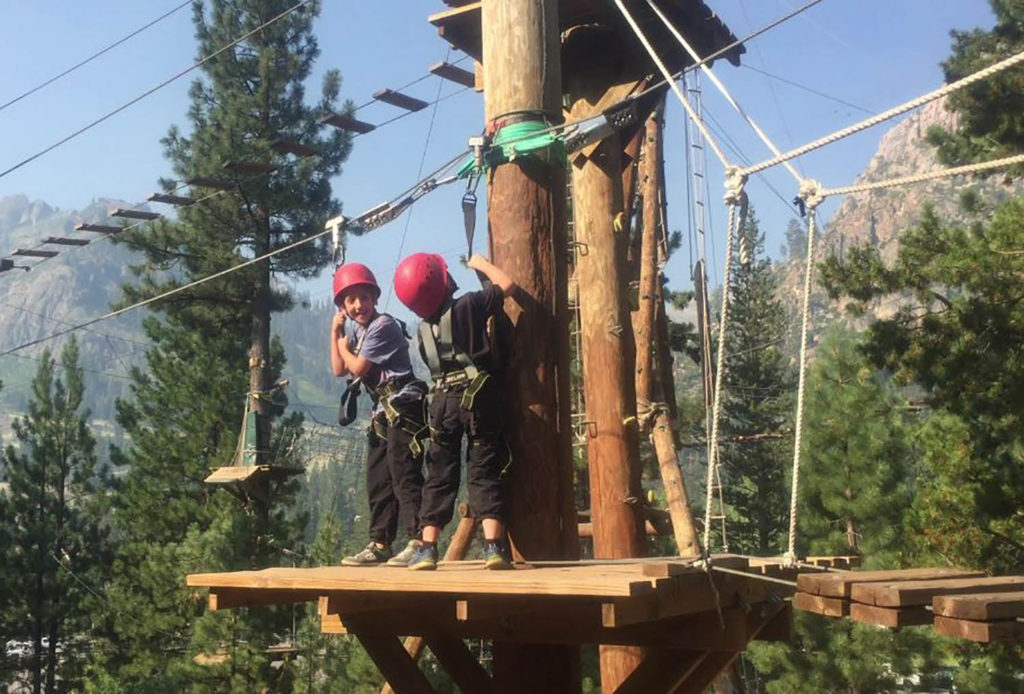
Treetop adventure parks, otherwise known as zip line or ropes courses, can be found the world over and are great family fun. However, they shouldn’t be confused with zip line tours. Aerial adventure courses typically include ladders, wobbly bridges and other creative obstacles between each tree platform, in addition to zip lines. And they can be hard work. Because of this, most courses have an age requirement of around five years. This is to ensure kids are tall enough to navigate the obstacles, as well as able to follow safety directions. Some parks, like Tahoe Treetop Adventures, are extensive enough in size to offer multiple courses of varying degrees of difficulty.
Pint Sized Tip: Courses can be anything from 10 feet to 50 feet in the air. That’s pretty high for a small kid, who has to trust that their carabiner and safety rope will hold them if they fall. With that in mind, know your child’s nature and don’t push them beyond their comfort level. Be considerate to both your child and other participants, by starting on easy courses first. You don’t want to be the parent holding up other participants when your child freezes in fear mid-course and has to be rescued. (Trust me, I’ve seen this happen more than once).
ATV Riding (Age 8+)
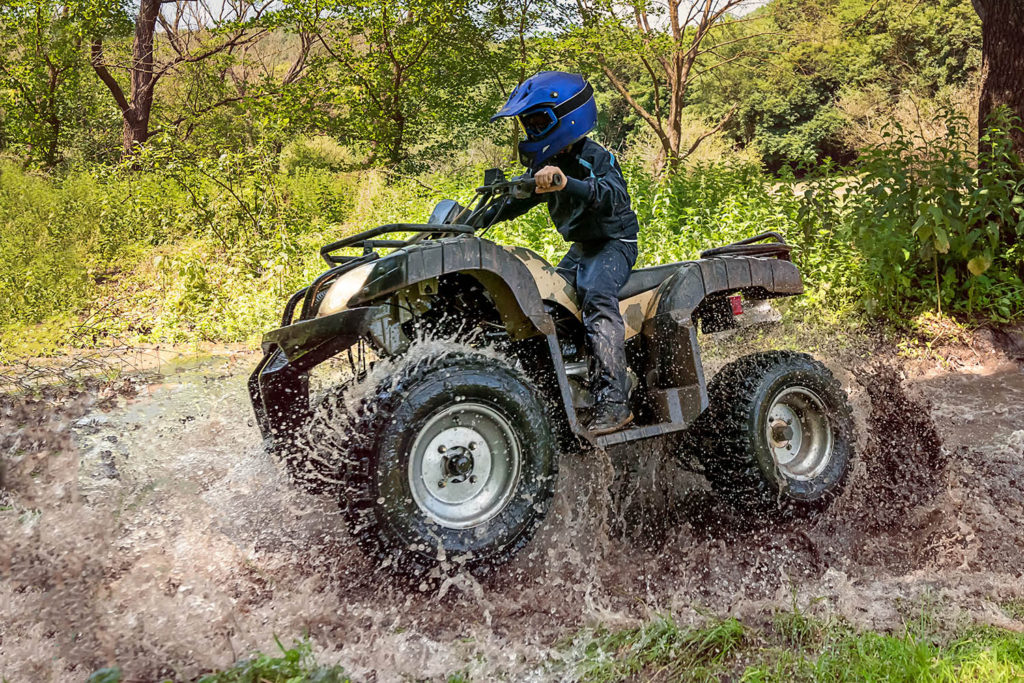
Last summer we had an ATV excursion booked in Pismo Beach, California. However, due to the pandemic, the rental company had to shut down. However, we’ll be rebooking as soon as it opens up again later this spring, and I’ll update this entry after our adventure. That said, if your child is over the age of 8, they are old enough to ride their own kid-sized ATV.
Mountain Biking (Age 8+)
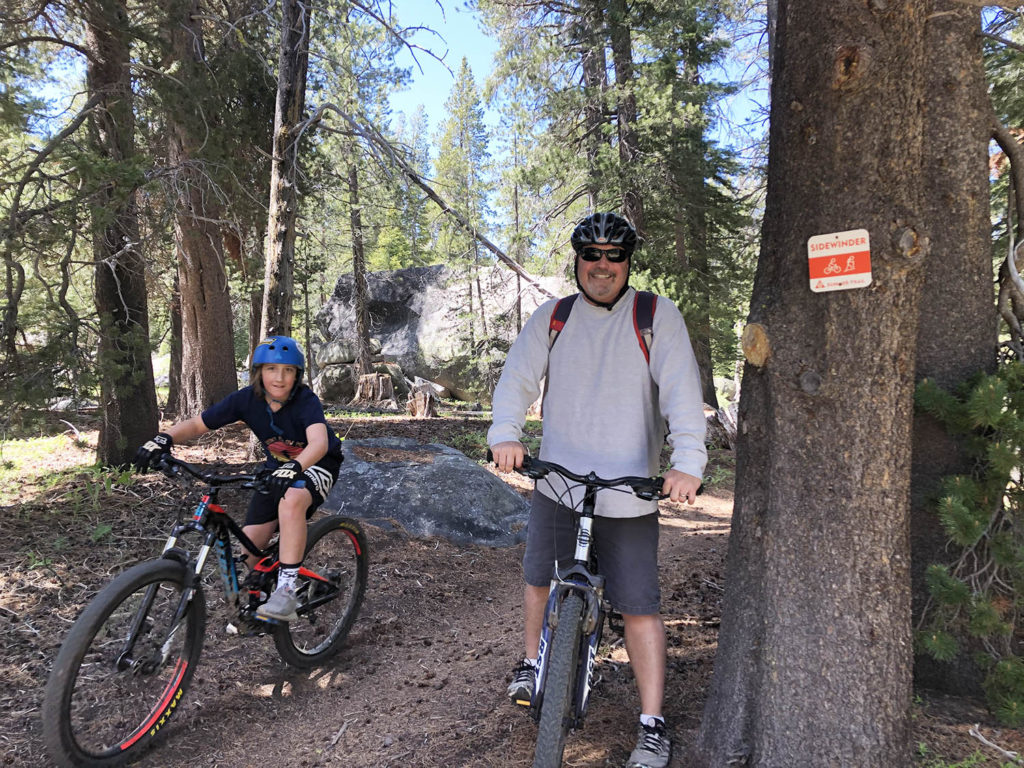
This is one of our favorite activities to do as a family. We love the thrill of downhill single tracks that whip you around turns and over rocks, boulders and tree stumps. And the great thing about mountain biking is that, other than the equipment, it is free. You just need to find suitable trails near you. If you don’t know where to start, ask a local bike shop where the best trails for kids are located.
In terms of age, I rate this activity as something that is ideal for eight-year-olds and up. It may seem counter intuitive, especially if your child has been riding a bike since they were three. But, the truth is, decent junior mountain bikes are typically sized for kids aged eight through early teens. That doesn’t mean you can’t take younger children on dirt trails. You just need to be prepared for a little whining and walking. (I know this from experience)!
If you want to ease your child into mountain biking, consider taking them to your local bike park. This will help them transition to trail riding when they are old enough. Although, my own boys can still spend hours on a pump track.
Pint Sized Tip: Mountain biking can be strenuous work, particularly for little legs. Always take a backpack filled with water and snacks. And, remember to take frequent breaks. Also make sure your child has a proper bike helmet that correctly fits their head.
Horseback Trail Rides (Age 7+)
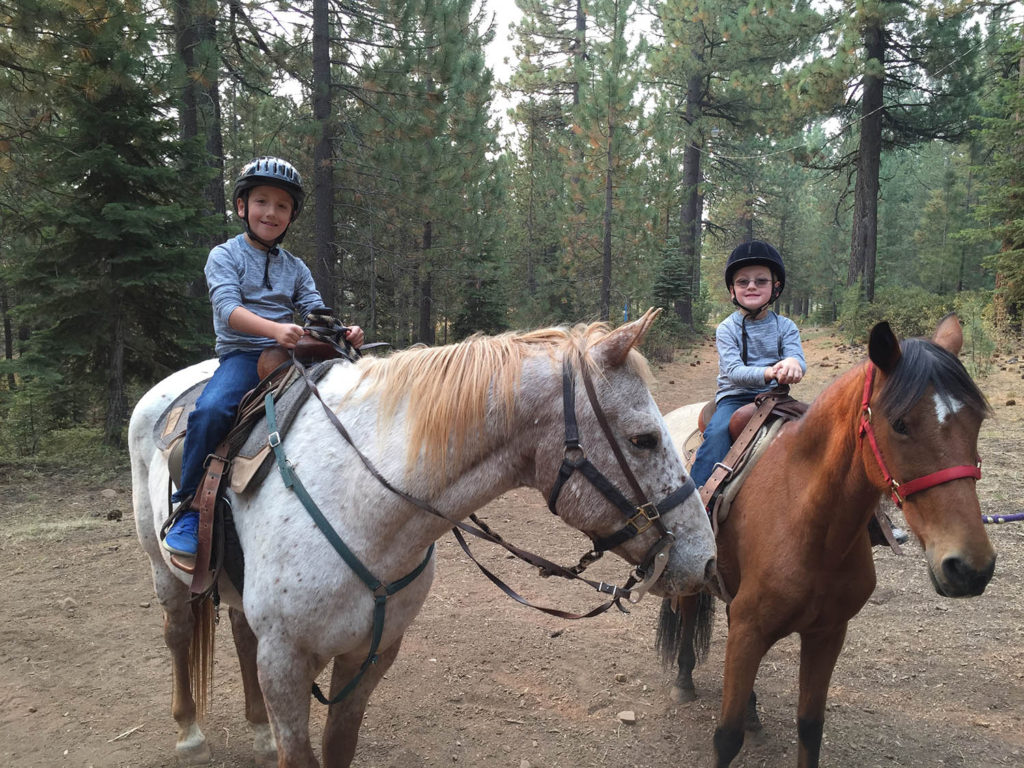
Commercial trail rides are typically not available to children under the age of seven. This is because the child is riding on their own and needs to be able to control the horse when needed. That said, most trail rides are extremely mellow; with the horses trained to just follow each other behind the guide. In the last six years of trail riding with my kids, we’ve only had one incident where a horse spooked and threw its rider.
If your child isn’t yet old enough to go on a horse trail ride, look for a pony ride instead. The only difference is the size of mount and the fact that your child’s pony will be hand-led.
Pint Sized Tip: Not all commercial trail ride operations are equal. Some mandate the wearing of helmets, while others make it optional. As someone who has been riding ever since they were knee high, I highly recommend insisting on a helmet – at least for your child, if not also for yourself. Horses can be unpredictable and it is better to be safe than sorry.
Hiking (Age 4+)
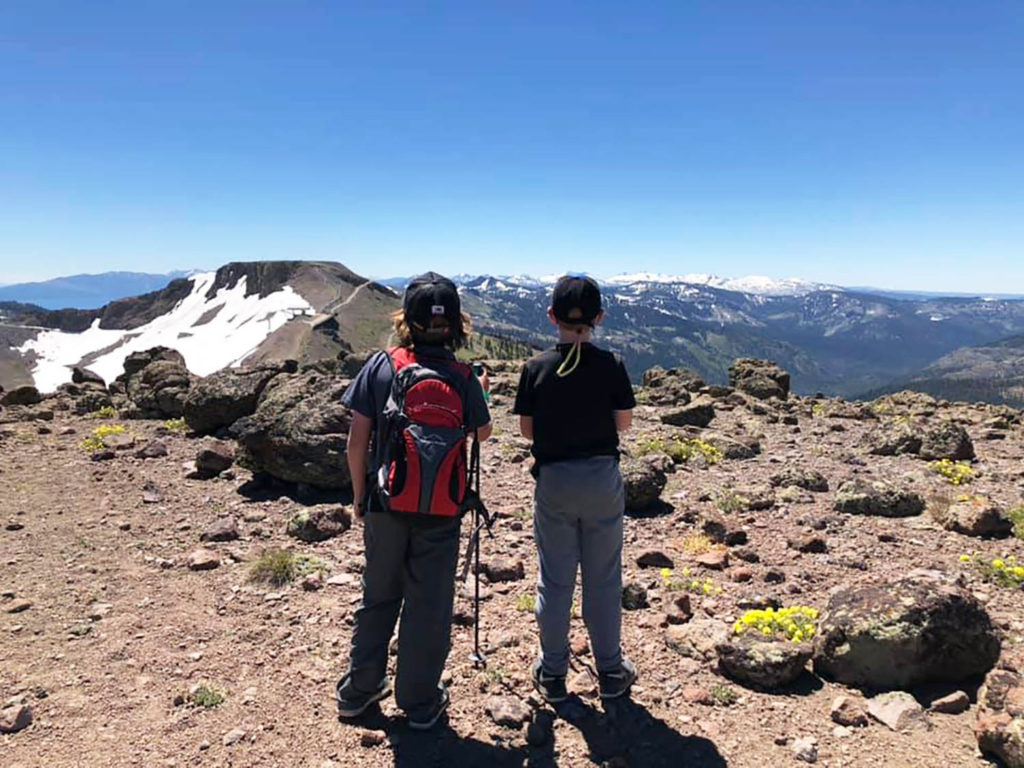
Hiking may not seem like an adventure, especially when your child is really little. But, for us, hiking has proved to be one our biggest adventure activities. We’ve seen bears, become lost, climbed boulders, and marveled at amazing views on our hikes. We also started when our kids were young.
By the time a child is four, they are perfectly capable of hiking two miles. However, you’ll need to take the hike at their leisure, with frequent stops to entertain their curiosity. Fortunately, this type of hiking doesn’t last long. For me, walks morphed into real hiking by the time my youngest was age six. By the time he was eight, we were logging about six miles and climbing mountainous terrain. By the time he turned nine, he had his own poles and was carrying his own water.
Now, at age 10, we are about to move on to backpacking and expect both of our kids to carry more weight in their backpacks. At the same time, we intend to build upon the basic orienteering skills that we have taught them.
Pint Sized Tip: Kids seem to grow like weeds. However, while this can get expensive with clothes and shoes, I can’t emphasize enough the need for decent footwear when hiking. I once made the mistake of taking my kids hiking over rocky terrain wearing just their regular sneakers. Fortunately, none of their slips caused a serious injury, but it could have ended badly.
Snow Adventure Activities

When it comes to adventure activities in the snow, the general rule of thumb is, if your child can walk, they are probably ready to learn activities like skiing, cross country skiing and snow shoeing. Both of my kids learned to ski the moment they turned three. At that time, my eldest didn’t know his right from left, so we had to put a green patch on one knee, to give him turning directions: “green turn,” “brown turn” etc.
If you’ve already read my North Lake Tahoe blog post, you know that there are other adventures you can enjoy during the winter months. These include snow tubing, dog sledding, ice skating, and snowmobiling. All of which can be started at a young age, although snowmobiling (on mini snowmobiles) is typically for those aged between 6 and 12.
Happy Travels!

Love this! My oldest are getting to an age where they are able to do more stuff so I loved reading your recommendations.
And I also had a scary Zambezi River rafting experience!!!!
Thanks Kristina! And I’m glad that I’m not alone in thinking that the Zambezi River is gnarly!
These activities look like so much fun. My boys would love these, especially the zip lining. Thanks for the age recommendations.
Glad to help Tiffany. If your boys are anything like mine, they’ll love the ziplining. It has become an annual summer activity in my household 😉
This is such a great guide. I am having a hard time picturing my six year old white water rafting, but maybe we should give it a try.
Thanks Adriane. If your six year old is adventurous and can swim and take direction, I see no reason why you can’t raft a class II or class III river with a river guide. To be honest, I had no idea that river rafting started so young until I took my 10 year old this past summer. If I had known sooner, I would have probably taken him around age eight.
I love this! We don’rt currently have kids but love that you are able to continue traveling as a family. It’s important to us to continue traveling and sharing those experience with our kids!
Thanks Karlina! I’m 100% in agreement. Travel has always been a major part of my life, so I felt it was important to share that passion with my kids. That said, enjoy your travel “freedom” while you have it. 😉 Traveling with kids, while still incredibly rewarding, can be a little different to pre-kids.